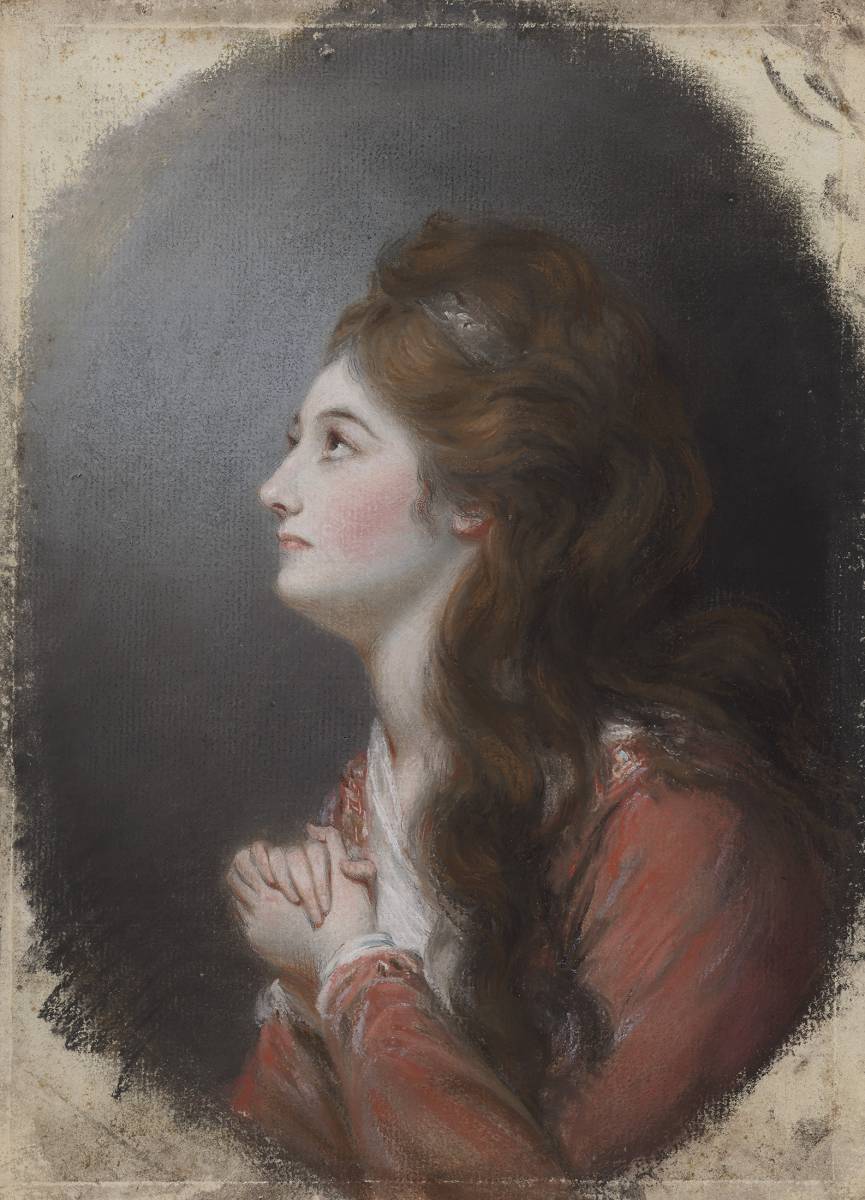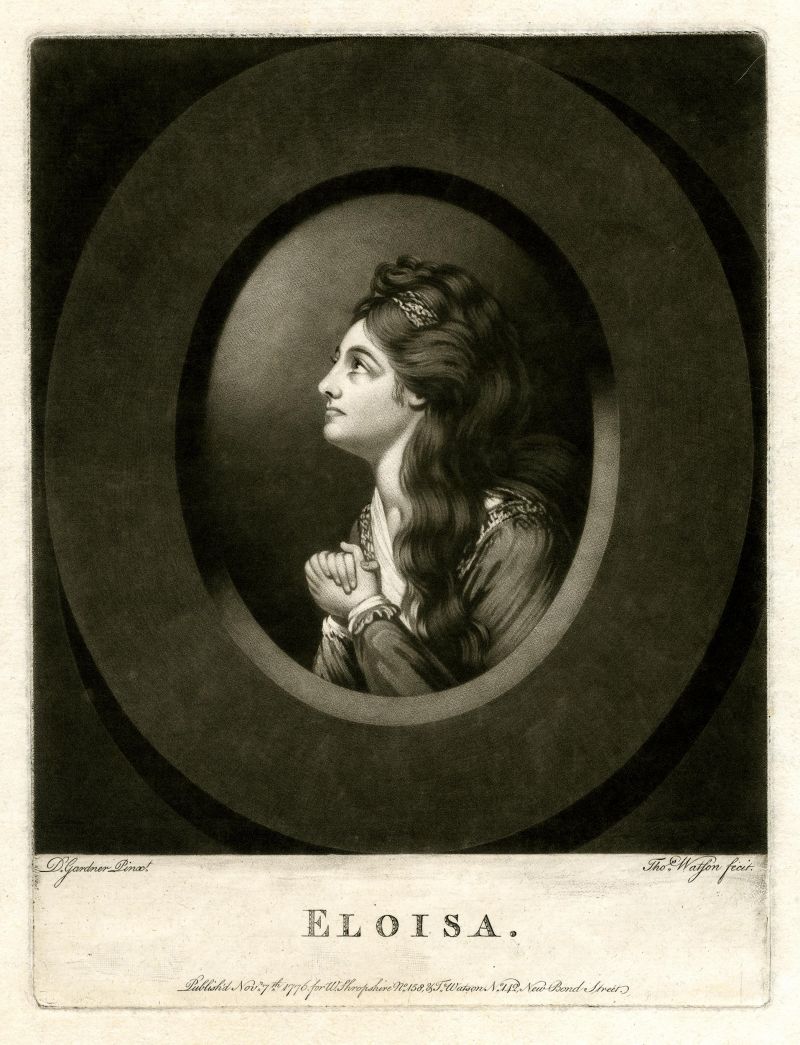This finely worked pastel was made in preparation for Gardner’s depiction of Eloisa which was published as a mezzotint by Thomas Watson in November 1776. Preliminary studies such as this are rare in Gardner’s oeuvre, finely worked in pastel on paper this unusual design gives important insight into Gardner’s working method.
Gardner was born in Kendal in Cumbria and after leaving school worked with George Romney. Romney himself had left Kendal for London in 1762, and Gardner followed in either 1767 or 1768, living initially at 11 Cockspur Street, very close to the Royal Academy Schools in Pall Mall which he joined in 1770.[1]
On leaving the schools, Gardner joined Joshua Reynolds's studio as an assistant in exchange for further tuition. Gardner was therefore working for Reynolds at the moment he was experimenting with his grandest and most impressive exhibition portraits. Shortly after establishing his own practice, Gardner began to produce works in pastel which closely followed the fashions established by his former master, simply replicating poses and compositions on a more domestic scale. The present portrait perfectly illustrates Gardner’s working method.
The present unusual work was made by Gardner when he was at the height of his professional powers, depicting the tragic figure of Heloise, the twelfth-century nun who carried on a passionate correspondence with the monk Abelard. Gardner designed the present study with a pendant depiction of Abelard. The tragic young lovers were revered in the eighteenth century and popular subject with artists after the publication of Alexander Pope’s Eloisa to Abelard a verse epistle that was published in 1717. Edward Fisher published a mezzotint in 1770 after a drawing by Francis Whatley entitled Eloisa and lettered with lines from Pope’s poems: ‘shall my Abelard be never mention’d without Tears? Shall the dear Name be never spoken but with sighs’. Angelica Kauffman produced a painting of Abelard offering Hymen to Eloisa and a single depiction of Eloisa lettered ‘Soon as thy letters trembling I unclose, that well known name awakens all my woes.’ Both Kauffman’s compositions were published in stipple engravings by William Wynne Ryland.
This beautifully worked sheet offers fascinating insight into Gardner’s innovative method. Gardner pioneered the combination of dry pastel blended on the page with water, creating a range of tonal effects. In the present work, the profile figure of Eloisa is broadly handled, whilst her delicate features show the precision of sharpened pastel.



